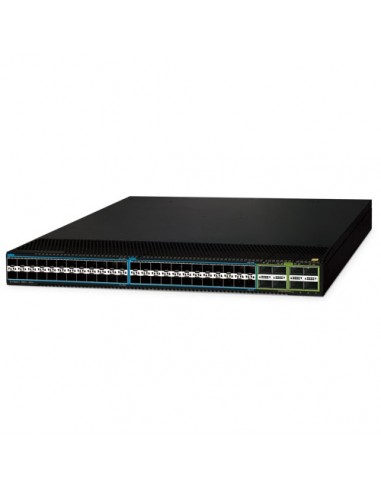DCS-7342-48Y8C: 48 Puertos 25G SFP28 y 8 puertos 40G/100G QSFP28
DCS-7342-48Y8C
Gestionabilidad: Capa 3.
Puertos de cobre: No.
Puertos de fibra: 56 puertos SFP (48 x 25G SFP28 y 8 x 40G/100G QSFP28).
Alimentación PoE: No.
ERPS: Sí.
ESPECIFICACIONES TÉCNICAS
- Puertos SFP
- Más de 24 Puertos
- Stacking físico
- Sí
- Velocidad de fibra
- Hasta 100G

